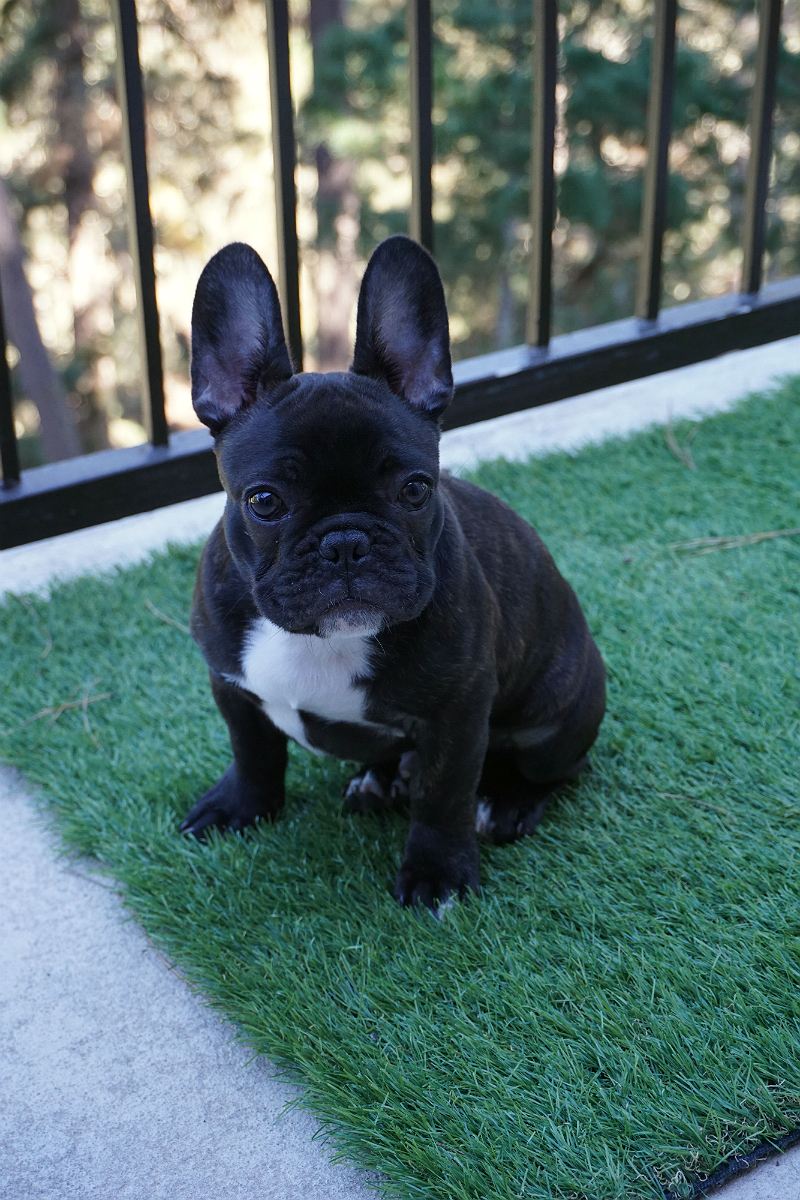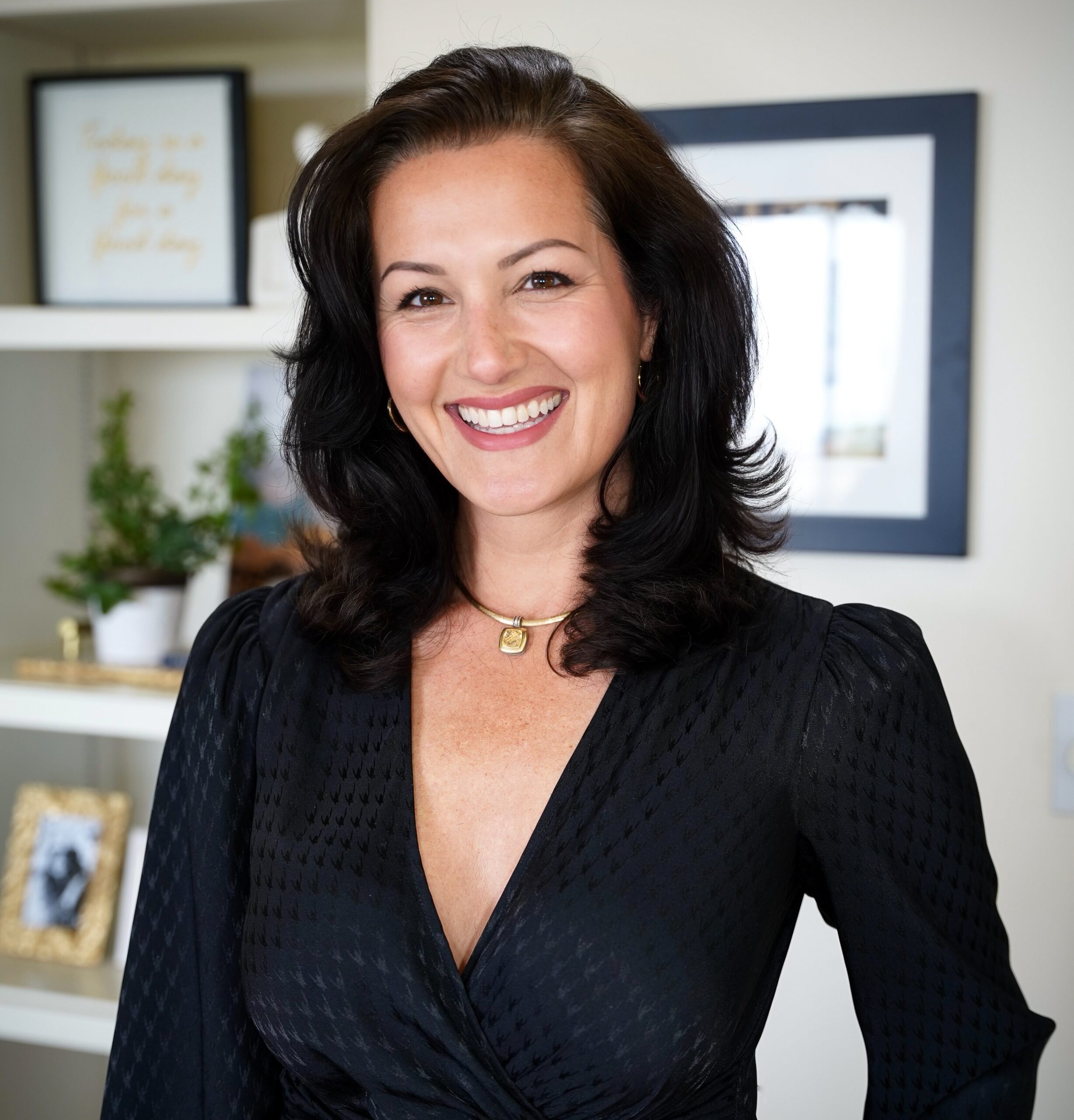Whether you’re thinking about adopting a puppy or are in the process of raising one, we’re here to share our puppy parenting tips (which we hope will make the whole process that much easier for you).
From crate training and grooming tips to potty training and teaching puppies new tricks, here are our favorite puppy parenting tips that we’ve been learning (and using) with our furry little guy.
Puppy Parenting Tips

A couple months ago we adopted an 8-week old French Bulldog who we named Wellesley. As much fun as he’s been (and one of the greatest blessings to come into our life), raising him has also been challenging and stressful at times.
From sleepless nights during the first few weeks (when he’d wake up every couple hours crying) to a few scary moments (like when we realized he had just put a spider in his mouth), becoming a puppy parent has its highs and lows. The good news is – as every week passes, things get easier and more manageable.
In the past few weeks, he’s learned to go potty (and even lets us know his cues), has been crate-trained, has learned several tricks and basic commands, and is getting socialized with other dogs and people (after we made sure he got all his shots). After reading a lot of puppy training articles, watching videos online, and talking to the pros, we’ve decided to share our favorite puppy parenting tips with you.

Crate Training
As busy working people, there are times during the day that we have to be at our office. That means we need to leave our puppy at home. Instead of allowing him to roam the house unwatched (which would be dangerous for him and result in the destruction of our belongings), we’ve decided to crate train our puppy. Instead of thinking of the crate as a cage, we refer to it as his “man cave” – a quiet place he can retreat to for nap time and rest.
As the AKC (American Kennel Club) states on their puppy training website, “For thousands of years, dogs in the wild have sought out small “dens,” where they can feel safe and sheltered while resting, caring for puppies, or recovering from an injury or illness. Giving your puppy his own personal bedroom can help him feel more secure.”
- Choose a crate that is the appropriate size for your puppy. It should be well-ventilated and large enough for the puppy to stand up, lie down, and move around a bit.
- Keep the crate door open when you’re at home with the puppy. This will enable him to freely go in and out of the crate, which makes him feel comfortable with the idea of the crate.
- Make the crate a quiet, cozy place. We recommend putting a plush bed and a toy inside the crate. In addition, when we leave him in the crate, we often cover it partially with a towel (to make it darker, which encourages him to rest).

Grooming & Hygiene
When it comes to puppy grooming and hygiene, here are our tips on keeping your puppy healthy and clean.
- If your puppy doesn’t need a full bath, cleansing wipes are a great alternative. These conveniently-packaged wipes make it fast and easy to clean your puppy. They’re also ideal for traveling, as they can be used anywhere (since they are pre-moistened).
- It’s recommended to only bathe a puppy (using shampoo for dogs) every month or two (and for some breeds, even less often). Since our puppy is small, we bathe him in the kitchen sink, as it’s easier to manage him there (rather than in a bathtub). Plus, we can regulate the water temperature (rather than using a hose), which makes the experience more pleasurable for him.
- For some breeds (like French Bulldogs, and puppies with large ears), regularly cleaning their ears is important. We soak cotton pads with this non-toxic ear cleansing solution that is designed to remove dirt and debris from the ears, which can help prevent infection or inflammation. NOTE: Never use a Q-Tip, as that can injure their sensitive ears.
- Brushing is also important, as it helps to shed dead skin cells while keeping the coat looking healthy and shiny. We brush our puppy weekly, as he is short-haired; but long-haired puppies need more frequent brushing to prevent tangles. Depending on the type of puppy you have, there are different types of brushes on the market. Bristled brushes are ideal for short-haired dogs, whereas other brushes (like the de-shedding types) are good for long-haired dogs.
- If your puppy gets red spots or skin inflammation, a soothing lotion designed for dogs can treat hot spots. Anything more serious requires a trip to the Vet.

Potty Training
Since potty training is one of the biggest issues any puppy parent will tackle, it helps to use all the tools and techniques available. Aside from repeated sessions (rewarding good behavior with a treat or enthusiastic response, like “Good Boy!”, every time he goes potty in the right spot), regularly encouraging your puppy to go potty reinforces the right messages.
- When we first brought our puppy home, we used super-absorbent puppy pads (in a non-carpeted area). These scented pads are a good way to introduce the idea of going potty in one designated area to your little pup. As your puppy gets bigger, teaching him to go potty outside is the next step.
- Since we live in a top floor condo apartment, taking our puppy downstairs to go potty isn’t always convenient (especially if he wakes up in the middle of the night). To make life easier on all of us, we put an artificial grass turf mat (which we regularly clean) on our deck. Not only does it enable our puppy to go potty outside (reinforcing the idea of doing his “business” on the lawn, rather than our carpet), it’s also easy to clean.
- Having heard that some parents have success teaching children sign language when they’re young babies (to make communication easier, as they learn words), we decided to test out this technique on our puppy. We use a hand gesture in conjunction with a verbal command (“Go Potty”) every time we take him outside. He has responded so well, that we often don’t need to remind him to “Go Potty” – we simply show him our hand gesture, and he goes out to “do his thing”. We have started using hand gestures for other commands, such as Sit, Lay Down, and Come. After just a few weeks, he’s quickly learned both the words and hand gestures, and will respond to both.

Toys & Games
Since puppies learn through playtime, giving them stimulating dog toys and playing games are a great way to train them, keep them occupied, and encourage them to learn good behaviors.
- The Chew Toy: Like giving a pacifier to a baby, a chew toy is an invaluable toy for a teething puppy. Since puppies have the natural inclination to chew on everything, instead of letting him discover your favorite pair of shoes, encourage good chewing behavior by giving him a chew toy. We take the chew toy with us for car rides and when we know he’ll get restless, as it helps to keep him busy and less high-strung.
- The Rope Toy: When your puppy gets a surge of energy, engage with him a fun and friendly game of tug-of-war. This lets him release his energy in a positively channeled way. We often like to play a game in which we say “Drop It!” (taking the toy away for a minute), then ask him to sit or do another trick, and then reward him with the toy again. This way he learns how to give-and-take.
- The Squeaky Toy: Since puppies are babies, they sometimes want a toy that makes them feel comforted. For our puppy, one of his favorite toys is his “Piglet” (a small plush squeaky toy that looks like a pig). This cute plush toy has become a comforting little friend to him (like a baby blanket is for a child). Since the high-pitched squeal noise gets his attention, he loves playing with it.
- The Kong Toy: For those moments when we want him to instantly relax, we stuff a Kong Toy with his kibble and top it with a little Peanut Butter. This treat-in-a-toy is one of the best ways to get him to calm down (especially when we’re about to leave him in his crate).

For more puppy parenting tips, we recommend the AKC website.

















How adorable is she! We have Boston’s, and would love to get a Frenchie.